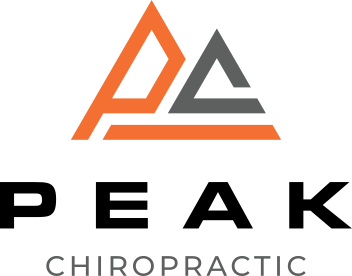When you're faced with a sports injury, understanding the right techniques for recovery can make all the difference. You might think rest is enough, but there's much more at play. Incorporating rehabilitation exercises, proper nutrition, and mental strategies not only facilitates healing but also prepares you for a successful return. Each element plays a role in your recovery journey, and neglecting one could set you back. So, what specific strategies should you consider to optimize your healing process?
Understanding Your Injury
To effectively recover from a sports injury, you first need to understand the nature of your injury. This means identifying whether it's a sprain, strain, fracture, or another type of injury. Each type has distinct characteristics and recovery protocols. For instance, a sprain involves ligament damage, while a strain affects muscles or tendons. Knowing the specifics helps you tailor your recovery approach.
Next, consider the severity of your injury. Is it mild, moderate, or severe? A mild sprain might only require a few days of rest and ice, while a severe fracture could necessitate surgery and a longer rehabilitation period. Understanding the severity allows you to set realistic expectations for your recovery timeline.
It's also essential to recognize the symptoms associated with your injury. Pain, swelling, and limited mobility can help you gauge your progress. Pay attention to your body's signals—if something doesn't feel right, don't hesitate to consult a healthcare professional. They can provide a definitive diagnosis and recommend appropriate treatment options tailored to your specific injury.
Finally, familiarize yourself with potential complications. Some injuries can lead to chronic issues if not properly treated. This knowledge empowers you to take proactive steps in your recovery, ensuring you don't push yourself too hard too soon.
Importance of Rest
Rest plays an essential role in your recovery from a sports injury. It's during this downtime that your body begins to heal, repairing damaged tissues and alleviating inflammation. Neglecting rest can prolong your recovery, leading to further complications and setbacks. Understanding the importance of rest can help you prioritize it in your recovery plan.
Here are some key reasons why you should embrace rest:
- Tissue Repair: Your body needs time to mend damaged muscles, tendons, and ligaments. Rest accelerates this process.
- Inflammation Reduction: Resting helps minimize swelling and inflammation, which are common after injuries.
- Pain Management: When you rest, you reduce the strain on your injury, allowing for less pain and discomfort.
- Energy Restoration: Your body uses energy to heal. By resting, you conserve energy for this essential process.
- Mental Recovery: Rest isn't just physical; it also allows you to mentally recover, helping you stay positive and focused.
Incorporating sufficient rest into your injury recovery is critical. You might feel the urge to push through the pain or jump back into your routine, but doing so can backfire.
Give yourself permission to take a break, listen to your body, and allow the healing process to unfold. By prioritizing rest, you set the foundation for a successful recovery and a return to your favorite activities stronger than ever.
Rehabilitation Exercises
Rehabilitation exercises play an essential role in your recovery journey.
By incorporating stretching, strengthening weak muscles, and focusing on balance and coordination, you can regain your strength and prevent future injuries.
Let's explore how each of these elements contributes to a successful rehabilitation process.
Importance of Stretching
Stretching plays an essential role in recovery from sports injuries, helping to restore flexibility and strength.
It's not just about easing tight muscles; stretching can greatly enhance your overall rehabilitation process. By incorporating stretching into your routine, you can improve blood flow, reduce pain, and increase your range of motion.
Here are some key benefits of stretching during recovery:
- Increases Flexibility: Stretching helps lengthen muscles and tendons, allowing for better movement and function.
- Reduces Muscle Tension: This can alleviate pain and discomfort, making it easier to perform daily activities.
- Enhances Circulation: Improved blood flow delivers nutrients to healing tissues, accelerating recovery.
- Prevents Future Injuries: By maintaining flexibility, you lower the risk of re-injury when you return to sports.
- Promotes Relaxation: Stretching can help reduce stress and anxiety, which is vital for mental recovery.
Integrating a consistent stretching regimen into your rehabilitation plan can make a noticeable difference.
Listen to your body, and aim for gentle stretches that promote healing while being mindful not to push too hard.
Strengthening Weak Muscles
After addressing flexibility through stretching, it's important to focus on strengthening weak muscles that may have been affected by your injury. Weak muscles can hinder your recovery and lead to further complications if not properly tackled.
Begin with low-impact exercises tailored to your injury and gradually increase intensity as your strength improves.
Resistance training is a great way to build muscle strength. You can use resistance bands, light weights, or even your body weight to perform exercises. Target the specific muscle groups that require strengthening. For example, if you've had a knee injury, focus on your quadriceps and hamstrings with exercises like leg lifts and squats.
Aim for two to three sets of 10 to 15 repetitions for each exercise. Pay attention to your form; it's better to perform fewer reps correctly than to risk injury with improper technique.
Incorporating functional movements, like step-ups or lunges, can also help restore strength and prepare your body for everyday activities and sports.
Remember to listen to your body. If you experience pain, stop immediately and consult your healthcare provider for guidance. This approach will guarantee a safe and effective recovery.
Balance and Coordination Exercises
Many people overlook the importance of balance and coordination during recovery from a sports injury, but these skills are essential for regaining full function. Focusing on balance and coordination exercises can greatly enhance your stability, helping you return to your favorite activities safely.
Here are some effective exercises you should consider incorporating into your rehabilitation routine:
- Single-leg stands: Practice standing on one leg for 30 seconds to build stability.
- Balance boards: Use a balance board to challenge your coordination and strengthen your core.
- Heel-to-toe walk: Walk in a straight line, placing your heel directly in front of your toe to improve balance.
- Dynamic movements: Perform side lunges or grapevines to enhance agility and coordination.
- Yoga or tai chi: Engage in these practices to improve overall balance and promote mindfulness.
Incorporating these exercises into your recovery plan not only strengthens your muscles but also helps your body learn to control its movements more effectively.
Nutrition for Recovery
Proper nutrition plays an essential role in your recovery from sports injuries, as it provides the significant nutrients your body needs to heal effectively. Focusing on a well-balanced diet can speed up your recovery process and help you regain strength.
First, prioritize protein. Your muscles need protein to repair and rebuild after injury, so include lean meats, fish, eggs, beans, and legumes in your meals.
Next, don't overlook carbohydrates. They're important for replenishing your energy levels, especially if you're engaging in light rehabilitation exercises. Opt for whole grains, fruits, and vegetables to provide your body with the necessary fuel.
Healthy fats also play a role in recovery, as they help reduce inflammation and support cell repair. Incorporate sources like avocados, nuts, seeds, and olive oil into your diet.
Hydration is equally important. Water helps transport nutrients throughout your body and keeps your tissues hydrated, which can ease discomfort and stiffness. Aim to drink plenty of water and consider electrolyte-rich beverages if you've lost fluids through sweating.
Lastly, focus on micronutrients. Vitamins and minerals, particularly vitamin C, vitamin D, zinc, and magnesium, are crucial for healing. Consume a variety of colorful fruits and vegetables to make sure you're getting a wide array of nutrients.
Pain Management Techniques
When you're dealing with pain from a sports injury, effective management can make a huge difference in your recovery.
You should consider using ice therapy, compression techniques, and various medication options to help ease your discomfort.
Let's explore how each of these methods can support your healing process.
Ice Therapy Benefits
Ice therapy, a widely recognized method for managing pain and inflammation, can be a game changer in your recovery process. When you apply ice to an injured area, it constricts blood vessels, reducing swelling and numbing pain. This technique is simple yet effective, making it a go-to for athletes and anyone dealing with sports injuries.
Here are some key benefits of ice therapy:
- Reduces Swelling: Ice helps control edema by decreasing blood flow to the injured area.
- Numbs Pain: The cold sensation can alleviate discomfort, providing immediate relief.
- Speeds Up Recovery: By minimizing inflammation, ice therapy can expedite healing time.
- Decreases Muscle Spasms: The application of ice may help to relax tight muscles, promoting easier movement.
- Enhances Mobility: Reduced swelling and pain can lead to improved range of motion as you recover.
Incorporating ice therapy into your recovery routine can greatly improve your pain management strategy.
Just remember to apply it for about 15-20 minutes every hour, ensuring you use a barrier like a cloth to protect your skin.
Compression Techniques Explained
Compression techniques are crucial tools in managing sports injuries and promoting recovery. By applying pressure to the affected area, these methods help reduce swelling, minimize pain, and support healing. You can use various tools for compression, such as elastic bandages, compression garments, and specialized wraps.
When using an elastic bandage, start by wrapping it snugly around the injured area, ensuring it's not too tight to cut off circulation. You should check for signs of excessive tightness, like numbness or increased pain.
Compression garments, like sleeves or tights, are designed to provide consistent pressure, which can enhance blood circulation and reduce swelling during activities.
It's also beneficial to combine compression with other recovery techniques. For instance, using compression while elevating your injury can further decrease swelling. Remember to apply compression consistently, especially after physical activities, to maintain its effectiveness.
As you implement these techniques, listen to your body. If you experience discomfort or if symptoms worsen, it's crucial to seek professional advice.
Incorporating compression into your recovery strategy can greatly improve your healing process and help you get back to your sport faster.
Medication Options Overview
Managing pain effectively is essential for your sports injury recovery, and medication options play a key role in this process. Understanding the various medications available can help you make informed decisions about your pain management.
Here's a quick overview of common medication options you might consider:
- Nonsteroidal Anti-Inflammatory Drugs (NSAIDs): These are often the first line of defense against pain and inflammation. Examples include ibuprofen and naproxen.
- Acetaminophen: A good alternative for those who can't take NSAIDs, acetaminophen helps reduce pain without the anti-inflammatory effects.
- Topical Analgesics: Creams or gels applied directly to the skin can provide targeted relief for localized pain.
- Corticosteroids: In some cases, your doctor may prescribe corticosteroids to reduce inflammation and pain, especially for more severe injuries.
- Opioids: For intense pain, opioids might be considered, but due to the risk of dependency, they're usually prescribed for short-term use.
Always consult with a healthcare professional before starting any medication. They can guide you in choosing the right option for your specific needs, ensuring a safer and more effective recovery process.
Mental Strategies for Healing
Healing from a sports injury isn't just about physical recovery; your mindset plays an essential role in the process. Maintaining a positive attitude can greatly influence your overall healing journey. Start by setting realistic goals for yourself. Break down your recovery into smaller, achievable milestones. This can help you stay motivated and focused, rather than feeling overwhelmed by the bigger picture.
Visualization is another powerful tool. Picture yourself fully recovered, back in action, and performing at your best. This mental imagery can reinforce your determination and boost your confidence.
Alongside visualization, practice mindfulness techniques such as meditation or deep-breathing exercises. These can help reduce anxiety and stress, allowing you to stay present and centered during your recovery.
Surrounding yourself with a supportive network is essential too. Communicate with friends, family, or teammates who understand your journey. Sharing your feelings and experiences can provide emotional relief and encouragement.
Don't hesitate to seek professional guidance, like a sports psychologist or counselor, if you feel overwhelmed.
Lastly, remember to be patient with yourself. Recovery takes time, and setbacks are a part of the process. Embrace the journey and acknowledge your progress, no matter how small. Each step forward is a victory.
Gradual Return to Activity
After focusing on mental strategies for healing, it's time to shift your attention to reintroducing activity into your routine. A gradual return to activity is essential for ensuring your body adjusts and heals properly. Rushing back can increase the risk of re-injury or prolong recovery.
Start by evaluating your current fitness level and how your injury feels. You'll want to ease back into your sport or activity in a structured way. Here are some effective strategies to contemplate:
- Listen to Your Body: Pay attention to any pain or discomfort during activity. If something doesn't feel right, stop and reevaluate.
- Set Realistic Goals: Break down your recovery journey into small, achievable milestones. This helps maintain motivation as you progress.
- Incorporate Low-Impact Activities: Begin with activities like swimming or cycling that are easier on your body. These can help maintain fitness without straining your injury.
- Gradually Increase Intensity: As your strength and confidence grow, slowly ramp up the intensity and duration of your workouts. This helps your body adapt without overwhelming it.
- Stay Consistent: Aim for regular, short sessions rather than infrequent, intense workouts. Consistency is key to a successful return.
Preventing Future Injuries
To keep future injuries at bay, it's vital to adopt preventive measures that enhance your body's resilience. Start by incorporating a thorough warm-up routine before workouts or games. This helps increase blood flow to your muscles and prepares them for the physical demands ahead.
Don't skip stretching—focus on both dynamic stretches before activity and static stretches afterward to improve flexibility.
Strength training is another significant element. By building strength in the muscles surrounding your joints, you create a natural support system that reduces the risk of injury. Aim for balanced training that targets all major muscle groups, paying special attention to areas prone to injury based on your sport.
Pay close attention to your body's signals. If you feel pain or discomfort, don't push through it. Rest and assess the situation; ignoring these signs can lead to more severe injuries.
Additionally, confirm you're using the right equipment, including footwear that provides proper support for your specific sport.
Finally, consider cross-training. This not only keeps your routine fresh but also works different muscle groups, minimizing repetitive strain injuries. Incorporate low-impact activities like swimming or cycling into your regimen.
Conclusion
To sum up, prioritizing rest and following a structured recovery plan can greatly enhance your healing process after a sports injury. By incorporating gentle exercises, maintaining a balanced diet, and focusing on mental well-being, you'll set yourself up for a smoother recovery. Remember, listening to your body and gradually returning to activity are key. With these effective techniques, you can not only recover but also reduce the risk of future injuries and get back to doing what you love.



